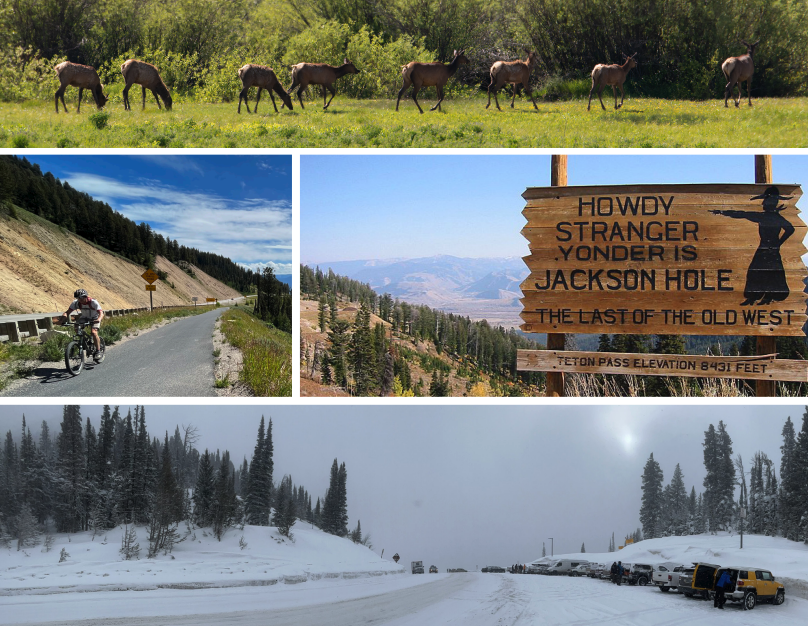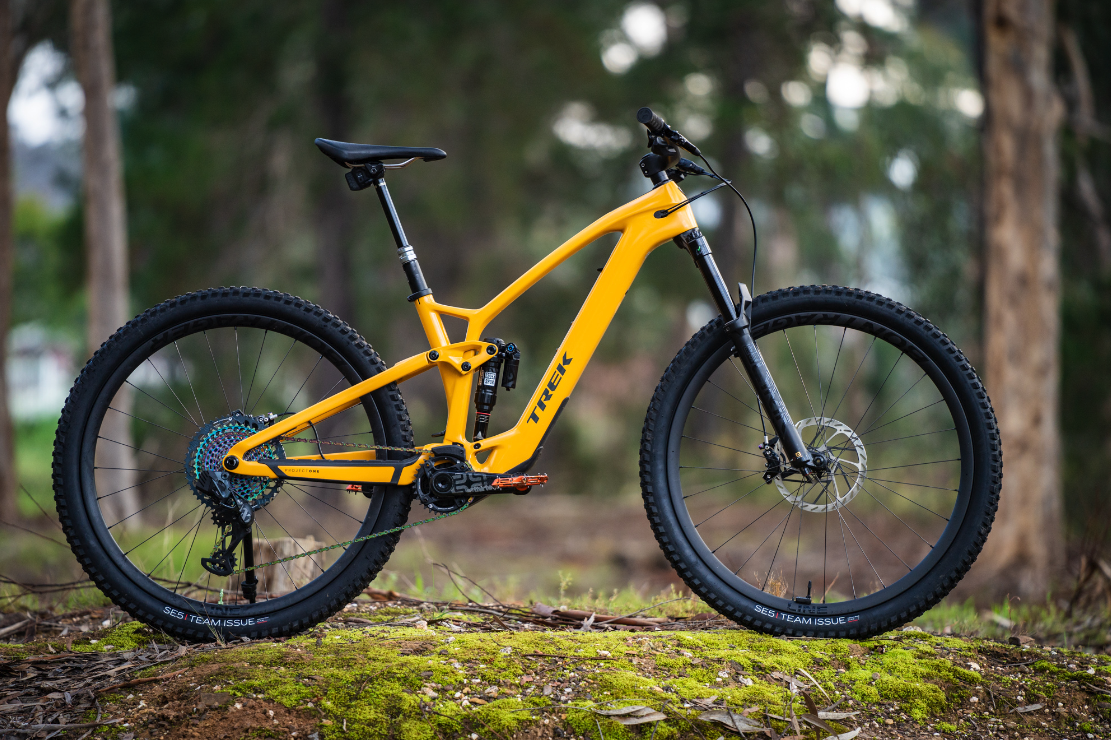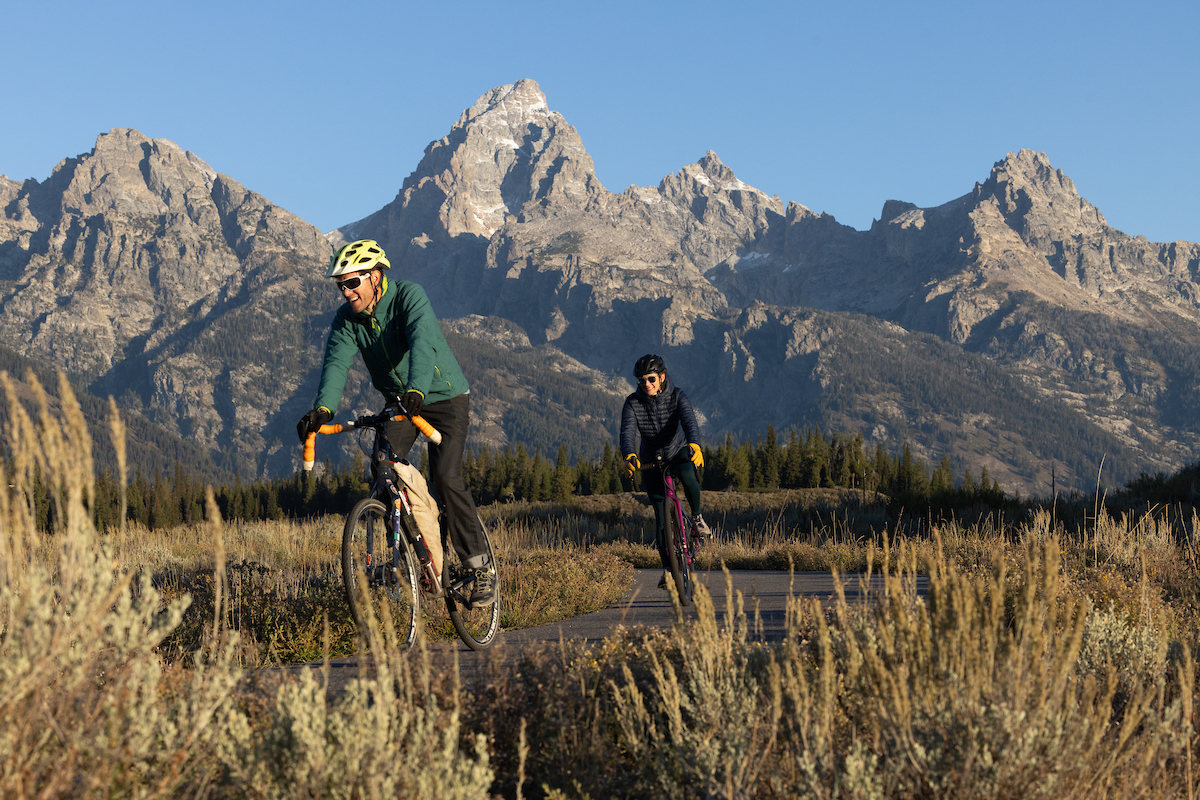Recent Public Comment Letters
Friends of Pathways is Teton County’s nonprofit advocate for sustainable transportation and healthy recreation in Jackson Hole. We are working to connect every neighborhood in Teton County to a pathway or trail. Below are our most recent public comment letters.
Teton Pass Corridor Study
November 3, 2023
Mr. Hagen Hammonds
Mr. Elijah Henley
Federal Highway Administration, USDOT
12300 West Dakota Avenue
Lakewood, CO 80228
TetonPass@dot.gov
Re: Teton Pass Corridor Study Final DRAFT
Dear Hagen and Elijah,
Thank you for the opportunity to comment on the Teton Pass Corridor Study Final DRAFT as well as the existing and future conditions of the Teton Pass Highway in Wyoming. Friends of Pathways (FOP) is Teton County’s nonprofit advocate for sustainable transportation and healthy recreation in Jackson Hole. Our primary interest in this study is active and sustainable transportation, multimodal access to public lands, improved transit options, improved trailhead design, and the Greater Yellowstone Trail.
We submit the following comments on the topics most relevant to our priorities:
Elevate Active Transportation Modes
We appreciate that the Final Draft Study addresses bicycle and pedestrian transportation modes and would like to see them included in the Transportation section of the main document, and not an “additional consideration”.
Transit & Parking Management
FOP supports the concept of paid, managed parking and a shuttle on Teton Pass, but understands the demand for both parking and transit changes with the seasons and weather conditions. While a recreation shuttle sounds like a dream that would reduce congestion, reduce emissions, and help skiers, hikers, and cyclists arrive at trail heads without the need for a car, it could cause unintended consequences, such as creating new parking problems at Coal Creek or Trail Creek parking lots if these are the designated intercept lots. It would be ideal to have a shuttle integrated into the START bus system and then studied and refined to best service recreationists on Teton Pass.
FOP does not support an increase in parking capacity, but would like to see the existing parking legitimized and relocated from WYDOT right of ways (ROW). Many parking areas that are currently intended for WYDOT’s use have become de-facto trailheads. It would be an improvement to legitimize
these spaces outside of the ROW and manage them with paid parking. The revenues from the paid parking could then help subsidize the shuttle services.
Safety
FOP supports safe pedestrian and cyclist crossings at the following locations: Phillips Bench, Top of Pass area, and Coal Creek. Underpasses and overpasses both have merit to create safe crossings, but no matter which might be chosen in the future, it’s important to design and locate the crossings where it will be obvious and intuitive to cross.
FOP is supportive of the installation of snowsheds at the Twin Slides and Glory Slide areas. At the top of the pass, in the Twin Slides area, improved parking, improved transit stops, and a safe crossing could be incorporated into the snow shed design.
Greater Yellowstone Trail
Friends of Pathways would like to see the Greater Yellowstone Trail connect over Teton Pass. The best, safest, and most cost-effective route for cyclists from Coal Creek to the top of the Pass is not along Highway 22, but on national forest land adjacent to the highway. FOP would like to see the Greater Yellowstone Trail’s route follow a similar path as the Bonneville Power Association (BPA) powerlines, and utilizing the 1.8 mile Old Jackson highway west of the Teton Pass Summit. We encourage continued discussions with BPA authorities and the Caribou-Targhee National Forest to help achieve this goal.
Steering Committee
FOP supports the formation of a Teton Pass Advisory or Steering Committee and encourages representation from non-government organizations that are a voice for different recreational pursuits on Teton Pass – i.e. hiking, biking and backcountry skiing. FOP would like to have a seat on such a committee if it is formed.
Thank you for all of the hard work you have put into this Study. It is an impressive document that lays out well the challenges and possible solutions for future travel through the Teton Pass Corridor.
Sincerely,
Katherine Dowson, Executive Director
Friends of Pathways
Friends of Pathways would like to see a future Teton Pass with improved transit options, improved trailhead design, and a connected Greater Yellowstone Trail.
e-bike use designation on select Jackson area trails
October 25, 2023
Todd Stiles, District Ranger
Bridger-Teton National Forest
RE: E-Bike Use Designation on Select Jackson Area Trails
Dear Todd,
On behalf of Friends of Pathways (FOP), thank you for considering our comments on E-Bike Use Designation on Select Jackson Area Trails. This is a topic that elicits many opinions and we appreciate the groundwork that has gone into drafting a preliminary proposal. FOP partners with the Bridger-Teton National Forest (BTNF) to develop and steward over 130 miles of front-country, natural surface trails that welcome a diverse range of users and activities. We are not a special interest group for one particular trail activity, but focus instead on building and maintaining a trail system which accommodates many modes of human-powered recreation.
A primary goal for FOP’s trails program is ensuring a sustainable and accessible trail system; that is a system which welcomes a diverse range of human-powered users and activities and holds up to increased usage with less degradation and annual maintenance needs. With this in mind, we submit the following comments regarding this new proposal.
1. Expansion for Class 1 E-Bike Use on Teton Pass
FOP supports the cautious expansion of Class 1 e-bikes for summer use on 27.5 miles of trails on Teton Pass, including the Old Pass Road. Because Teton Pass already has many separated-use trails, we believe it is a good location to try expanding access to e-bikes. We suggest the BTNF establish more specific metrics to evaluate this effort which can then be used to inform future use or expansion of use. There were about 227,000 user counts on Teton Pass in 2022, a small number when compared with the Cache-Game area, which had approximately 432,000 user counts in the same period. We believe there is room for more users on the Teton Pass trail system. It is still undetermined whether usage numbers will increase significantly on Teton Pass because of this proposal, or if people will simply be trading in their old mountain bikes for e-bikes. Should there be future discussions about allowing e-bikes in the Cache- Game area, FOP feels strongly that additional trail improvements will be necessary to better separate trail users and activities.
From a sustainability standpoint, we do not think there is a distinction between Electric Mountain Bike (EMTB) tires and regular mountain bike tires in regards to trail erosion or impact. In our experience, horse, hike and motorcycle/dirtbike trails are more likely to have erosion and chronic maintenance issues. In addition, there is merit to allowing e-bike users to ride up the Old Pass Road to access designated trails instead of using a vehicle to shuttle their bikes up the highway.
2. Improving Accessibility to Local Trails for People with Differing Abilities
FOP supports the use of Class 1 e-bikes in the proposed designated areas to improve accessibility to local trails. E-bikes may play an important role for people who cannot access trails under their own power, or those who have health conditions or other physical limitations that keep them from being able to continue mountain biking. Please consider adding the Old Pass Road Loop trails to the expanded area, since these trails were designed to accommodate adaptive trail equipment.
3. Extension of Class 1 E-Bike use on Munger Mountain and Horsetail Creek Areas
FOP does not believe that EMTBs have the same impacts to the trail system and surrounding wildlife as motorcycles and therefore supports the extended e-bike season on Munger and Horsetail Areas. Data collectors on Munger Mountain logged just under 30,000 counts last year, which is significantly lower than total counts on either the Teton Pass or Cache-Game trail system. FOP supports closure of the Big Munger trail to e-bikes from December 1 to July 1. Based on anecdotal and direct observations of closure violations the past several years, additional BTNF education and enforcement will be necessary to achieve this goal. FOP proposes continued monitoring and data collection on Munger Mountain to track usage and impacts to the Munger trail user experience.
4. Permit System for E-Bikes and Other Opportunities to Promote Responsible Use of the Trails
FOP enthusiastically supports the proposed sticker permit system for Class 1 e-bikes and additional opportunities to educate e-bike users about seasonal and fully restricted areas as well as common trail etiquette. To a great extent, the success of this e-bike expansion program relies on the effectiveness of the education effort and the willingness of e-bike users to comply with trail restrictions, such as not riding in Cache-Game or the Palisades Wilderness Study Area (PWSA). Bike shop owners and employees are in an ideal position to model best practices and encourage compliance from those who rent or purchase e-bikes from their shops. FOP will gladly partner with bike shops and the BTNF to share educational collateral and promote a unified message.
5. Include Increased BTNF Enforcement to Ensure E-Bike User Compliance
Please include an enforcement plan in your future environmental analysis. This component is currently missing from your scoping document. When enforcement measures are lacking, the public becomes the de facto police force, which only exacerbates tensions amongst trail users and makes it harder for people who ride e-bikes to make a winning case for their inclusion or expansion on non-motorized multi-use trails. Please craft an enforcement plan and dedicate the necessary resources to deal with scofflaws and others who abuse the public honor system.
Thank you for this opportunity to comment, and for all of the preliminary work that has gone into this effort. Ignoring the e-bike issue only makes it more difficult to address in the future; we are grateful for the robust public discussion and engagement that will help determine the best course of action.
Sincerely,
Katherine Dowson, Executive Director
Friends of Pathways
The 2023 Trek Fuel EXe employs a unique German-made motor to create one of the quietest and lightest e-MTBs on the market.
Grand Teton National Park future visitor use management
October 3, 2023
Superintendent Chip Jenkins
Grand Teton National Park
Sent via Email:
Dear Superintendent Jenkins,
On behalf of Friends of Pathways (FOP), thank you for the opportunity to submit comments regarding the future of visitor use management in Grand Teton National Park (GTNP). I have attended several presentations on recent visitor use survey results in GTNP, and appreciate the work you and your team have put into this very important topic.
Friends of Pathways has a thirty-year history of encouraging active transportation modes of travel in Teton County. Our efforts have resulted in a 70-mile pathway network in Jackson Hole that distinguishes our small town from many others in the Rocky Mountains and makes walking and biking a safe, fun and accessible choice for residents and visitors alike. FOP played a key role in the advocacy and creation of Grand Teton’s pathway network which is well-used and loved by thousands of people a year. For these reasons, and more, we encourage the Park to think proactively about future visitor use management in GTNP and develop additional opportunities for people to experience and visit the Park without being so intrinsically tied to their motor vehicle.
While the National Park Service acknowledges that Grand Teton National Park visitation was developed with the car in mind, it is also clear that car-centric growth models will only fuel climate change and other negative environmental impacts in the Park – including road noise, wildlife collisions, and the need for more car storage in areas that should not be giant parking lots. Please be more deliberate about creating opportunities for visitors to leave their cars behind, even if only for a day or a couple of hours. The public expects National Parks to model best practices for conservation and sustainability. I am sure under your excellent leadership, that GTNP can craft a future visitor use management plan that employs forward-thinking tools for managing travel within the Park boundaries.
FOP proposes the following considerations for improving visitor use management in the Park:
1) Improve walking and biking infrastructure at all overnight lodging facilities in the Park, including Colter Bay Village, Jackson Lake Lodge, Signal Mountain and the Gros Ventre Campground. Certainly, the Park can encourage people to leave their car behind once they get to their overnight lodging. Make it safe and easy for people to walk and bike around Colter Bay and the Jackson Lake Lodge area; explore the option to allow bicycles to use the old road from Colter Bay to Jackson Lake Lodge to connect the two visitor areas; consider bike rental fleets for campground and lodging areas, or partner with a bike vendor or bike share operator to see if this is something they would consider.
2) Connect the pathway at Gros Ventre Junction to the Gros Ventre Campground and to the Town of Kelly. This would be a huge safety and recreation improvement for people that are already riding their bikes along the Gros Ventre Road – many of whom are Park visitors staying at the GV Campground.
3) Make it safer for people to walk or ride bikes in the Moose-Wilson Corridor. Millions have been spent making this road corridor better for the driving public. And while it is easier for people on bikes to ride the newly paved section of the road, it is not safer. Please consider enhancements for biking and walking safety including use of the Levee Access Road to the LSR Preserve for cyclists and future discussions about pathway development.
4) Start planning for the pathway to extend from South Jenny Lake to Signal Mountain Campground along the Teton Park Road, which would provide visitors a safe, car-free connection from the Signal Mountain Campground to Leigh Lake and Jenny Lake.
5) Improve the interface of the Bradley-Taggart area pathway to minimize conflicts with pathway through-users and car traffic. Coordinate this improvement with upcoming trailhead reconstruction.
6) Add an Airport pathway connection, from Highway 89 to the JH Airport. This pathway would serve both workers, travelers and potential car-free park visitors, who would not rent a car at all and still experience the wonders of Grand Teton National Park.
7) Agree to a transit pilot program in conjunction with local agencies. While the Park has stated that it is not going to fund or operate a transit program, there is still substantial room for collaboration and cooperation with START and/or Teton Village Association. Considering over 80% of park visitors start their trip outside of the park, there is already an established audience for a small, seasonal transit program. As the Park’s closest neighbor, Teton Village seems especially suited for a pilot shuttle. Visitors could take a small van or bus from the Village to Granite Canyon TH, Death Canyon TH or Bradley Taggart TH. All of these areas would allow for point to point hiking – e.g. Granite to the Tram, Granite to Phelps Lake, Death Canyon to Granite, Death Canyon to Bradley Taggart. Put bike racks on the vans and people can bike back to their starting point. This is all achievable and would give Park visitors a car-free option for exploring the Park as well as make it more feasible to hike point to point. Another area that could be explored is extending the planned JH Airport transit pilot further north to Moose and Jenny Lake, thereby connecting the large visitor base of the Town of Jackson with key park destinations.
Teton County has set a high bar for its transportation future through its Comprehensive and Integrated Transportation Plans. These adopted policies envision a community where walking, biking and transit are preferred modes of travel and future transportation demands are met through alternative transportation options. I encourage you to work closely with your neighbors to the south and investigate how GTNP might better integrate with Teton County to encourage a more sustainable transportation model for future visitors to the Park.
Thank you for this opportunity to comment and for all of your impressive leadership at GTNP.
Sincerely,
Katherine Dowson
Executive Director
Friends of Pathways encourages Grand Teton National Park to think proactively about future visitor use management and develop additional opportunities for people to experience and visit the Park without being so intrinsically tied to their motor vehicle.




